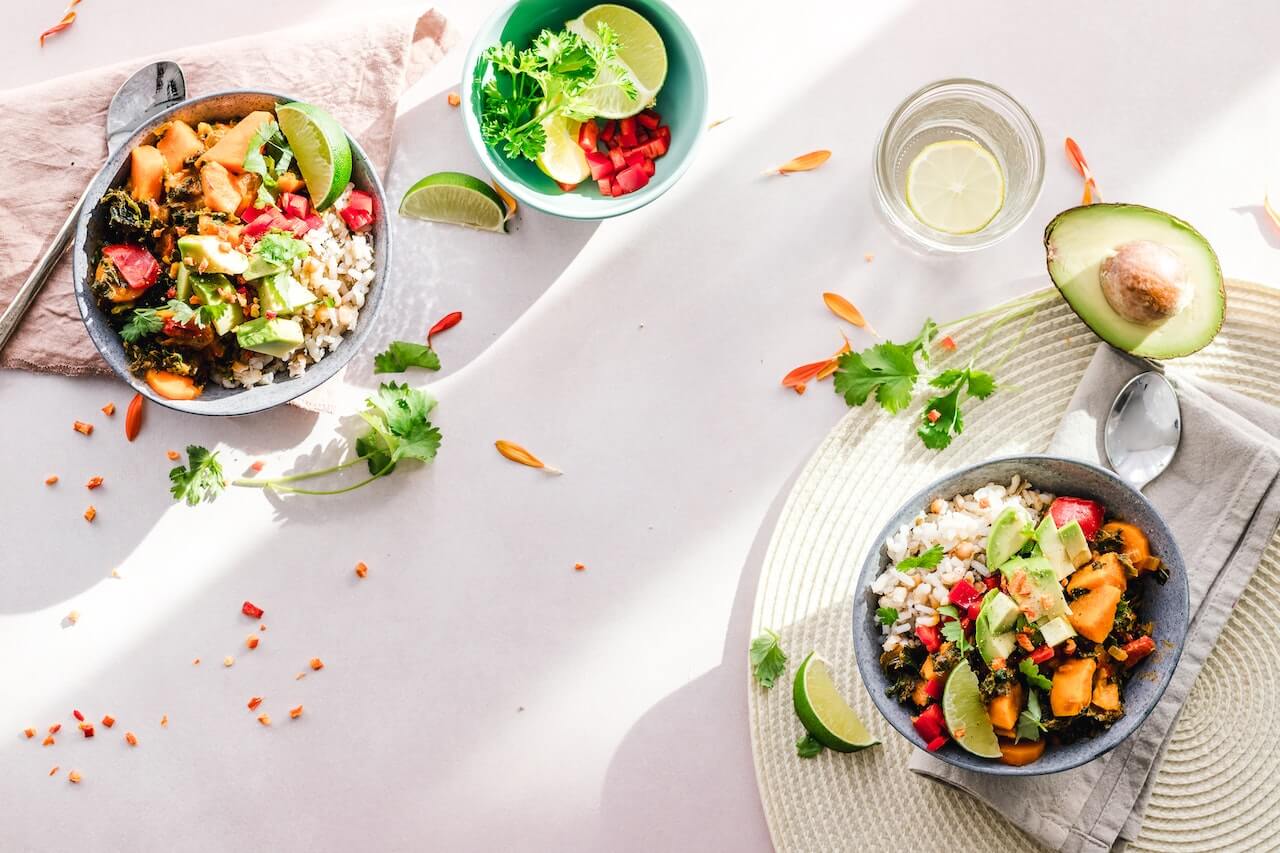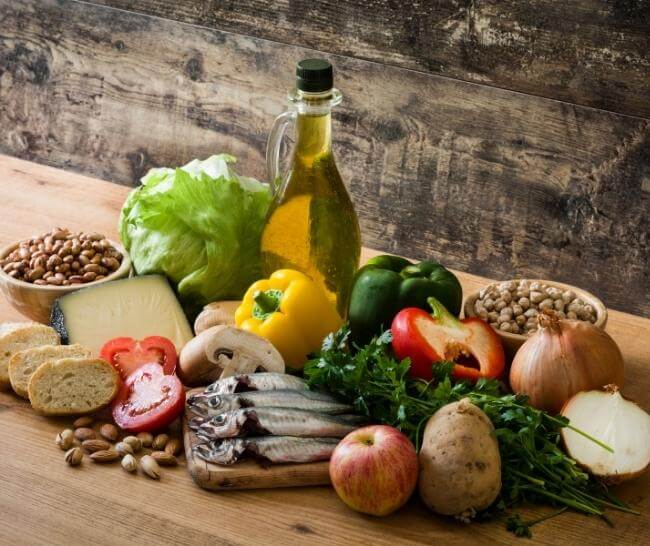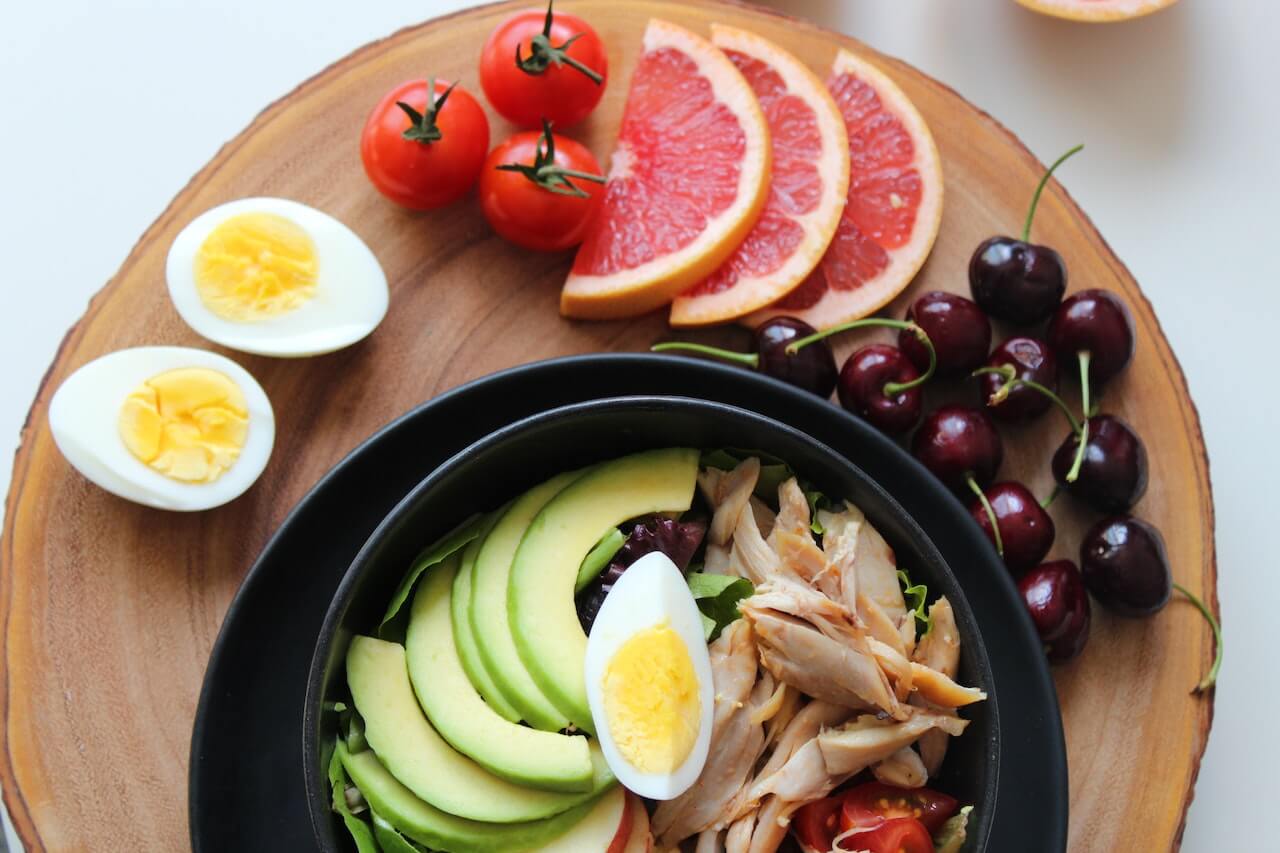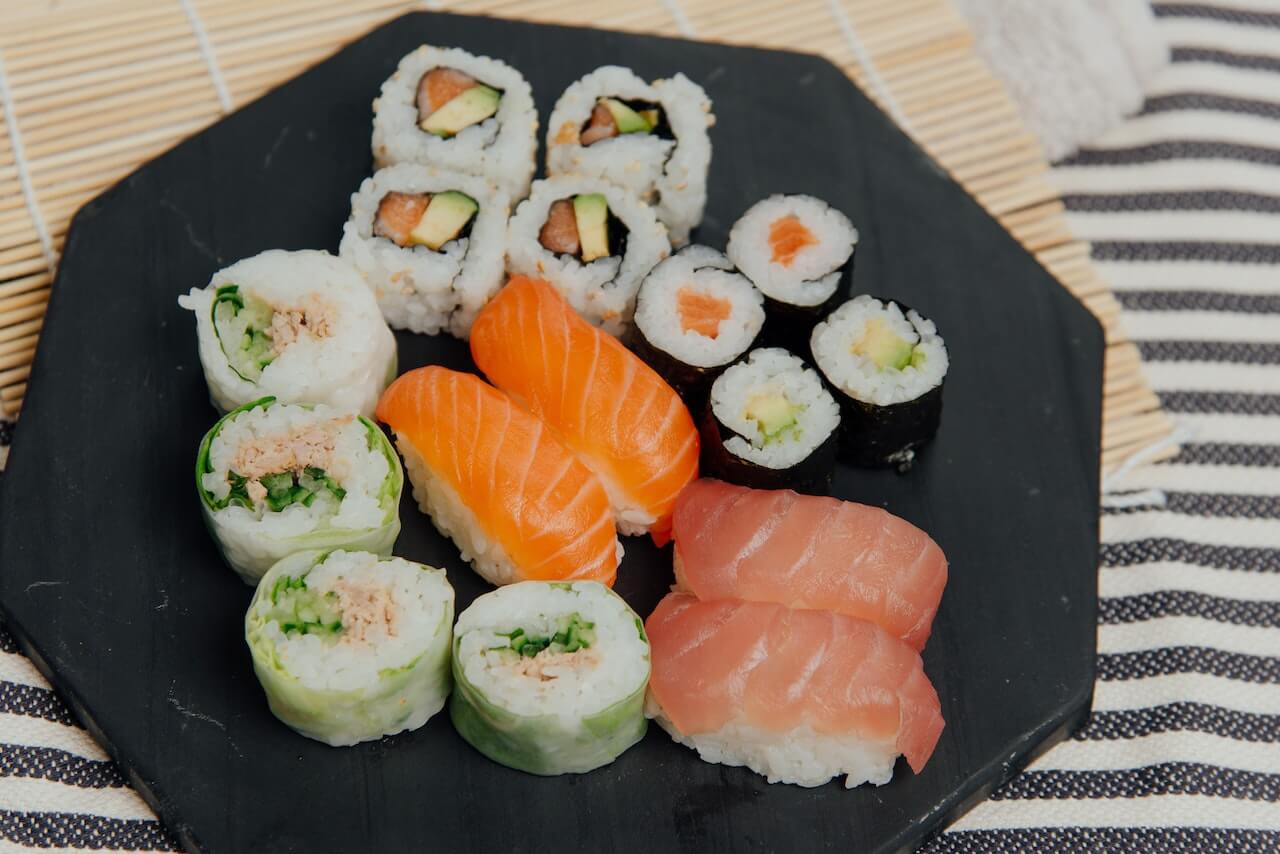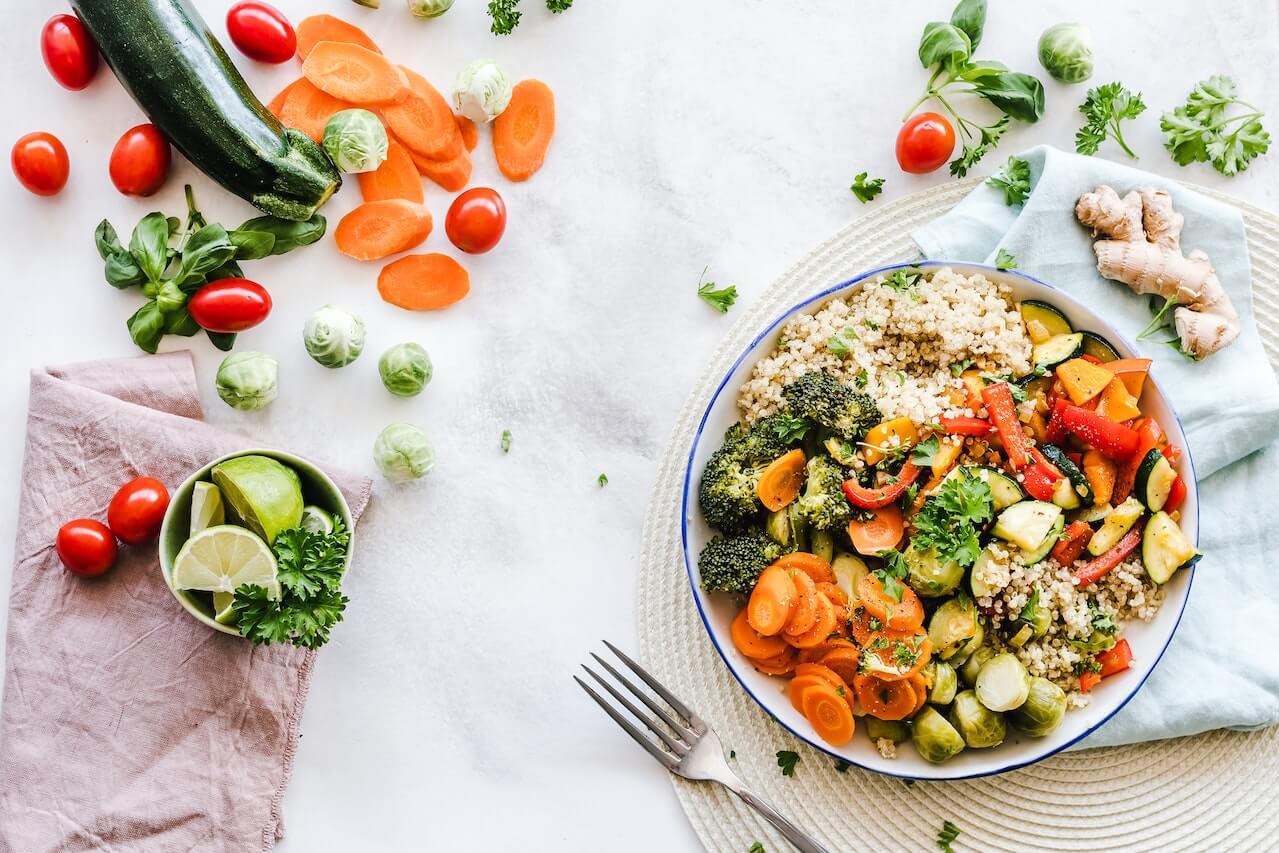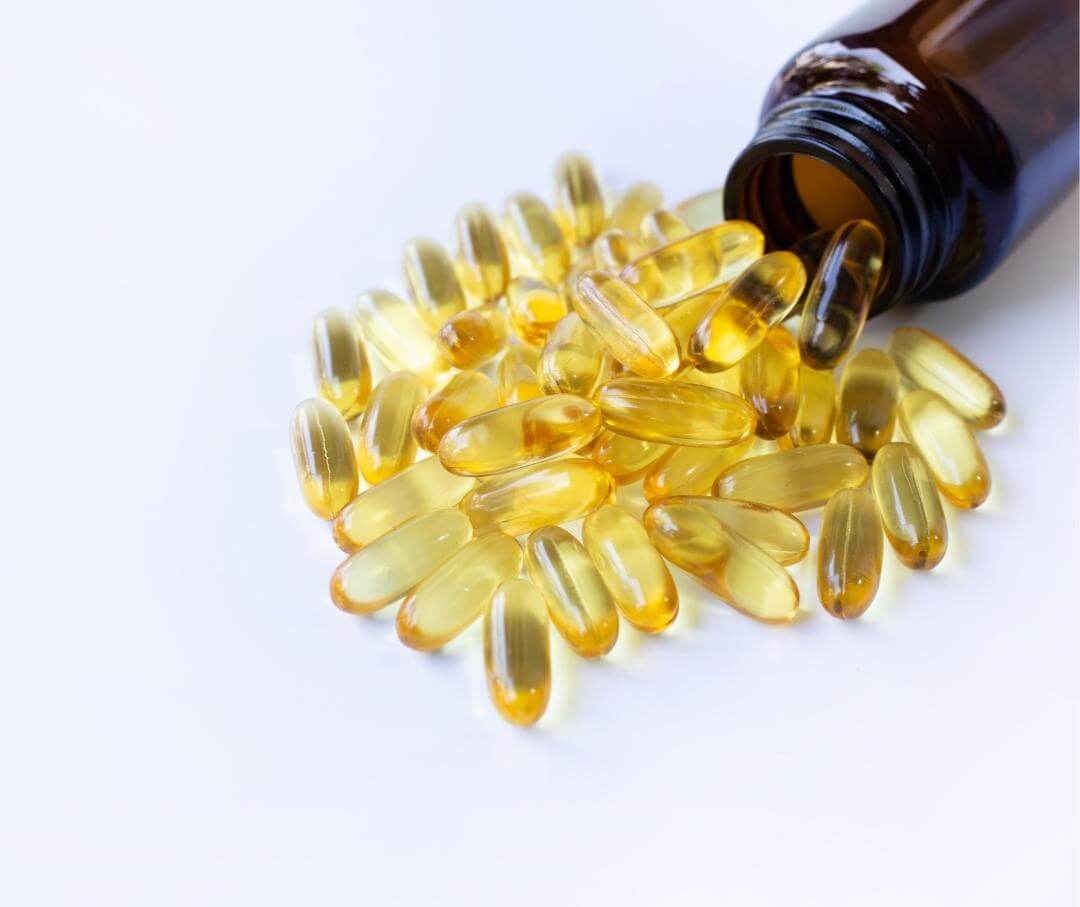Fat sometimes gets a bad reputation. People think eating fat will make them gain excess fat. But, you need to eat fats to absorb fat-soluble vitamins A, D, E, and K and produce essential hormones. Fat protects the brain and body, keeps you warm, and gives your body energy. It’s important to be mindful of how much dietary fat and what kinds to support optimal health and weight loss.
What are Dietary Fats?
Three macronutrients exist and are necessary to fuel our bodies: protein, carbohydrates, and fat. Dietary fats are an essential macronutrient in our diet. For many years, people believed low fat intake was best for good health.¹ But, that may not have been the best dietary advice. Now, we recognize that not only do we need fats, but the type of dietary fat matters. Unsaturated fats (monounsaturated and polyunsaturated fats) along with omega-3 fatty acids are essential for a healthy body. On the other hand, saturated fats should be limited and trans fat should be eliminated completely.¹
The amount and type of dietary fat plays a role in your cholesterol levels. Cholesterol is a subgroup of dietary fat. We need a certain amount of cholesterol to function properly (it helps make cells and hormones). Our bodies make cholesterol and we can consume it through the foods we eat.
In 2015, the Dietary Guidelines for Americans no longer considered cholesterol a nutrient of concern.² Research shows that cholesterol in food doesn’t correlate to higher levels of cholesterol in the blood.² What they have found is that higher intake of saturated fat and trans fat correlates to higher blood cholesterol levels. The same is true for a high intake of refined sugars and carbohydrates!³
What Are Healthy Fats? Healthy vs. Unhealthy Fats
It is better to focus on replacing unhealthy fats with healthy fats than to drastically reduce or eliminate dietary fats. Healthy fats include unsaturated fats like monounsaturated fats, polyunsaturated fats, and omega-3 fatty acids. These types of fats are less likely to promote insulin resistance, inflammation, and fat storage.⁴ Omega 3 fatty acids reduce cardiovascular disease risk.⁴ Some examples of healthy fats are olive oil, avocados, avocado oil, nuts, and seeds.
Alternatively, unhealthy fats promote obesity, inflammation, and insulin resistance, which leads to a cascade of negative health outcomes such as metabolic syndrome, heart disease, and type 2 diabetes. Some examples of unhealthy fats are large quantities of butter, palm oil, ice cream, and lard.
Are Healthy Fats Good For Weight Loss?
Healthy fats can help with weight loss and reduce stored body fat. Newer research is revealing that lower carbohydrate and higher fat diets can be helpful in maintaining weight loss and metabolic health.¹,⁵ Pairing fat and protein alongside lower glycemic index carbohydrate foods can reduce blood sugar spikes following a meal or snack.⁶
Fat helps you feel full longer, which can reduce mindless snacking or overeating at meals. Recent research showed that consuming polyunsaturated fat led to feeling more satisfied or full after a week of intake compared to other fat sources.⁷ Polyunsaturated fat may be more satisfying than monounsaturated fat-rich meals.⁸,⁹ Consuming healthy fat like an avocado with some whole wheat toast and an egg for breakfast can help you stay full, minimize glucose level spikes, and boost weight loss.

List of Good Fats That Will Help You Burn Fat
Avocado
Avocados are high in both fiber and monounsaturated fats.¹⁰ While this fruit is mostly fat (80%), it has similar effects on weight management as low-fat fruits and vegetables. Data analyzed from NHANES finds that adults eating avocados have a lower risk of metabolic syndrome, lower weight, and body mass index compared to adults not eating avocados.¹¹
You can enjoy avocados in so many ways! Eat them plain, sliced on a salad, blended into a smoothie, mashed onto whole wheat toast, or cubed on top of tacos or soup. This versatile healthy monounsaturated fat is packed with fiber, can help you to lose weight, and balance blood sugar levels.
Dark chocolate
The inclusion of dark chocolate on this list might surprise you. Dark chocolate contains flavonoids, which promote vascular health. Many studies show that moderate chocolate consumption improves cardiovascular health and reduces the risk of heart disease.¹² In addition to heart-healthy fats, it’s also rich in iron and fiber.¹³
This sweet treat in moderation can help provide some healthy fats and enjoyment. Look for a dark chocolate variety of at least 70% cocoa as it is higher in flavanols and lower in added sugar.
Fatty fish
Fatty fish is high in polyunsaturated fats, including omega-3 fatty acids. Salmon, anchovies, herring, mackerel, sardines, and tuna are all high in omega-3 fatty acids. The American Heart Association recommends 3 ounces of fatty fish two times per week.¹⁴ Fatty fish is heart-healthy and anti-inflammatory due to the high levels of polyunsaturated fats.¹⁵ Fatty fish can be grilled or baked and served with salad or grilled vegetables.
{{mid-cta}}
Olive oil
Extra virgin olive oil is a healthy oil and contains mostly monounsaturated fat. The Mediterranean Diet is well known for its heart benefits and olive oil is a main component.
Olive oil is a great ingredient for making salad dressings and coating vegetables. Olive oil can be used in most cooking methods but can sometimes lose flavor when heated at high temperatures.
Chia Seeds
Chia seeds are high in omega-3 fatty acids and fiber. One serving of chia seeds is about 2.5 tablespoons and contains about 7 grams of heart-healthy fats.¹⁶
This mix of heart-healthy fats and fiber will help you to lose weight and consume needed nutrients. Chia seeds can be added to smoothies, oatmeal, baked goods, and yogurt. You can soak them in milk or yogurt to make overnight chia seed pudding.
Nuts
Nuts are a great source of healthy fats along with fiber and protein. There are so many kinds to choose from, like walnuts, almonds, pistachios, peanuts, and Brazil nuts. A 1 ounce serving of walnuts is an excellent source of omega-3 fatty acid and is a good source of magnesium.¹⁷
Walnuts have been researched extensively and have been found to be beneficial for heart health, cancer, diabetes, weight, and gut health.¹⁷
In a nutshell (no pun intended), they provide a favorable mix of protein, fats, and fiber that will support weight loss by helping you feel full and keep your glucose levels stable. You can grab a handful or incorporate them into dishes. Nut butters are another easy way to incorporate nuts into your diet.
Eggs
Eggs used to be on the no-eat list for their supposed link to elevated cholesterol levels. But this myth has been busted. There is no strong link between the dietary cholesterol in eggs and cholesterol in the blood.¹⁸
Eggs have so many benefits and are a great source of protein, fats, and vitamins and minerals. Over half of the fat comes from heart-healthy fats.¹⁸ Eggs are more affordable than other protein sources and can be quickly made into a balanced meal or snack. Eggs can be boiled, fried, scrambled, or used to boost the protein and heart-healthy fat content of baked recipes.
Tofu
This plant-based food will boost your protein intake while providing mostly heart-healthy fats. One serving of tofu is packed with protein and healthy fats. Tofu is also a great source of calcium and has been found to help prevent obesity and type 2 diabetes due to soy isoflavones.¹⁹, ²⁰ Tofu can help you lose weight and prevent blood sugar spikes.
Tofu can be blended into recipes like a pudding or it can be baked to add more protein and a good texture to bowls, noodle dishes, stir-fries, and salads.
Full-fat dairy
Full-fat dairy provides probiotics, fat, and protein from a single food. Some good options are no-sugar-added yogurt, Greek yogurt,cheese or milk. Full-fat dairy has not been linked to metabolic disease when paired with whole foods like fruits, vegetables, and high-fiber grains.²¹
Greek yogurt can make a delicious breakfast or snack between meals. Try combining it with low glycemic fruits, like berries, and nuts to create a balanced dish.
Ground Flaxseed
Flaxseeds provide a great source of healthy fats and fiber. One tablespoon of ground flaxseed provides healthy fats and fiber. The fat in flaxseeds are almost entirely monounsaturated or polyunsaturated fat.²²
Ground flaxseeds can be added to smoothies, oatmeal, yogurt, baked goods, or homemade no-bake energy bites for a filling snack. They can boost the fat content of low-fat or no-fat foods, to ensure you have a well-balanced meal.
Easy Tips to Incorporate More Healthy Fats in Your Diet
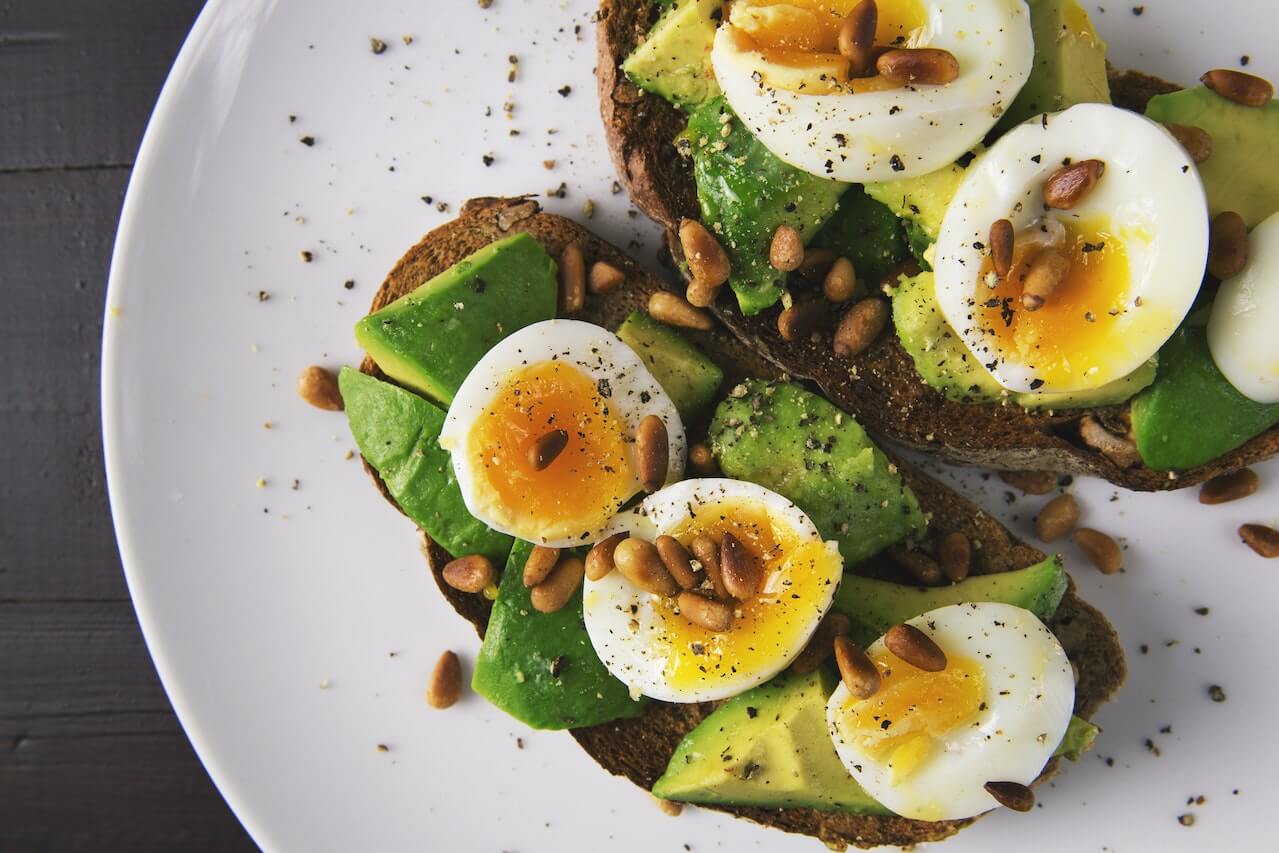
Limit saturated fats
Remember to use healthy fats in moderation. Just because they are healthy fats does not give you a license to eat without limits. Some heart-healthy fats have saturated fat as well, so make sure to read your labels. The American Heart Association and Dietary Guidelines for Americans recommend keeping saturated fat to less than 10% of total calories (around 200 calories per day for a 2,000 calorie diet).
Swap olive oil for butter
Boost your healthy fats (mono- and polyunsaturated fats) by using olive oil in recipes.
Add avocado to your meals
Avocados are filling and can help with weight loss. Try adding them to smoothies or on sandwiches.
Include nuts in your recipes
Nuts are a great healthy fat. They add crunch and protein to your recipes. Remember 1 handful per day is the recommended serving size for nuts.
Go for homemade salad dressings
You can use olive oil as a base for salad dressing. Mix two parts oil to one-part vinegar with herbs. Many packaged dressings are high in unhealthy fats. This is a great substitute to boost your healthy fat intake.
Eat the whole egg
The fat and cholesterol in egg yolks do not raise your cholesterol levels. Keep hard-boiled eggs in the fridge for a quick and filling boost to a meal or snack.
Include Omega-3s everyday
Choose one of the following every day: fatty fish, chia seeds, flaxseeds, nuts, or seeds. This simple will help boost your omega-3 intake and keep you full.
It is important to choose healthy fats in moderation as part of your diet. Incorporation of healthy fats can help you to lose weight and prevent cravings and snacking. Learn more about nutrition and weight management with Signos. When you connect your CGM to the Signos app, it can show you how your body responds to different foods and make specific nutrition and exercise recommendations based on your unique biodata.
- Item 1
- Item 2
- item 3
Topics discussed in this article:
References
- https://pubmed.ncbi.nlm.nih.gov/30442800/
- https://time.com/3705734/cholesterol-dietary-guidelines/
- https://pubmed.ncbi.nlm.nih.gov/33762150/
- https://pubmed.ncbi.nlm.nih.gov/30228616/
- https://pubmed.ncbi.nlm.nih.gov/29541907/
- https://pubmed.ncbi.nlm.nih.gov/32075959/
- https://pubmed.ncbi.nlm.nih.gov/28760423/
- https://pubmed.ncbi.nlm.nih.gov/23688821/
- https://pubmed.ncbi.nlm.nih.gov/28098139/
- https://pubmed.ncbi.nlm.nih.gov/23638933/
- https://pubmed.ncbi.nlm.nih.gov/23282226/
- https://pubmed.ncbi.nlm.nih.gov/31064163/
- https://fdc.nal.usda.gov/fdc-app.html#/food-details/170273/nutrients
- https://www.heart.org/en/healthy-living/healthy-eating/eat-smart/fats/fish-and-omega-3-fatty-acids
- https://pubmed.ncbi.nlm.nih.gov/29621669/
- https://nutritiondata.self.com/facts/nut-and-seed-products/3061/2
- https://walnuts.org/nutrition/nutrition-information/
- https://pubmed.ncbi.nlm.nih.gov/30909449/
- https://nutritiondata.self.com/facts/legumes-and-legume-products/4393/2
- https://pubmed.ncbi.nlm.nih.gov/33390391/
- https://pubmed.ncbi.nlm.nih.gov/34258627/
- https://fdc.nal.usda.gov/fdc-app.html#/food-details/2343063/nutrients

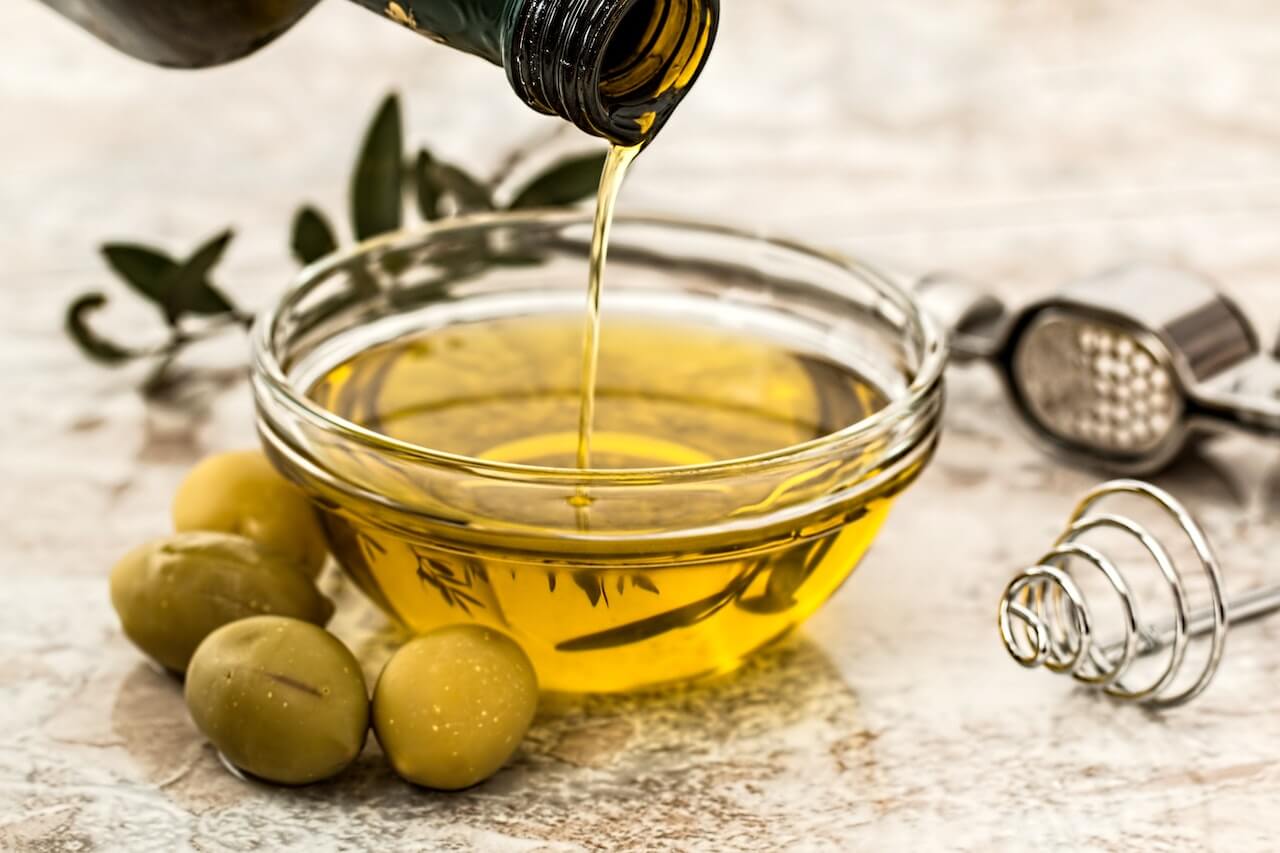


.jpg)
